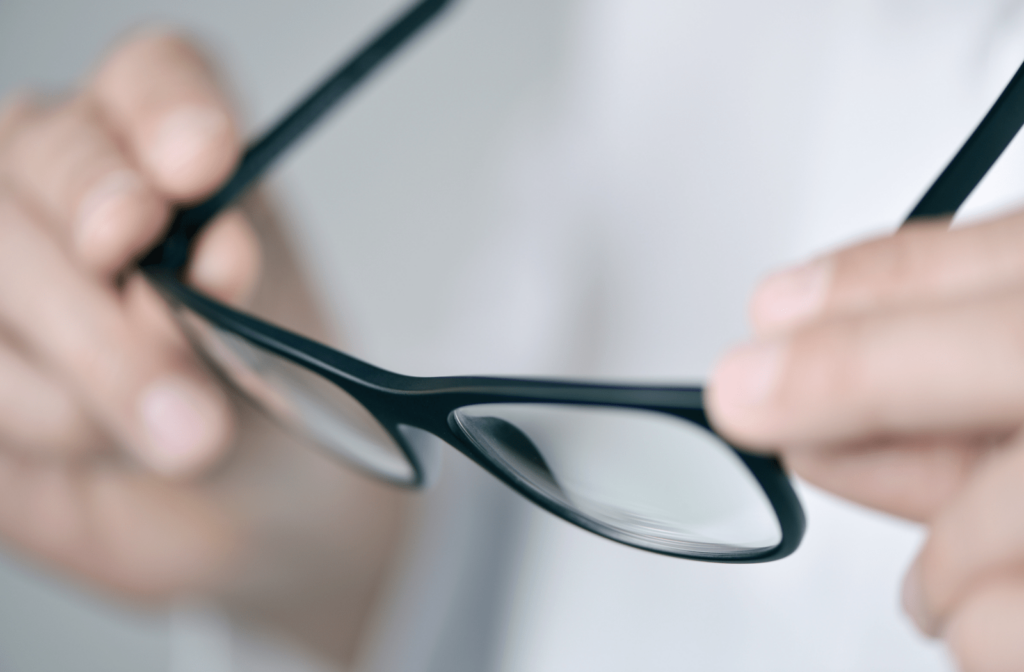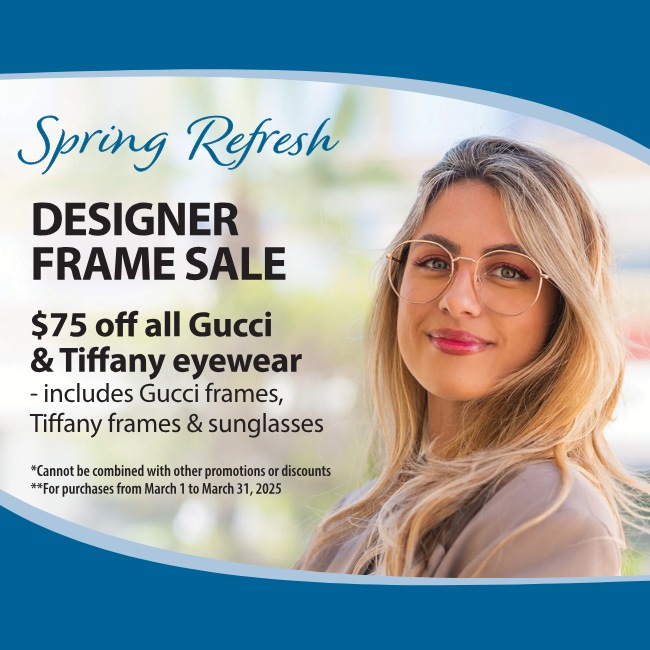For people with multiple prescriptions, few things are as frustrating as having to take your glasses on and off between checking your phone and watching TV. It’s even more frustrating if you have to switch to an entirely other pair of glasses.
That’s why some glasses wearers have chosen to go with progressive lenses. Progressive lenses include three prescriptions in one, allowing you to see at near, intermediate, and far distances.
If you have multiple prescriptions and are tired of switching your glasses every time you have to read, progressive lenses might be the solution for you.
What Are Progressive Lenses?
You may have heard progressive lenses referred to as no-line bifocals. Like typical bifocals or trifocals, progressive lenses can correct vision errors at multiple distances. However, progressive lenses do away with that noticeable line separating the reading and the distance prescriptions.
This no-line design offers a more natural appearance and a smooth transition between prescriptions. Your prescription gradually changes from the top to the bottom of the lens. This change means you can use three different parts of the lens for whatever distance you need to see.
The top of the lens is ideal for distance vision, the middle part helps with intermediate vision (such as looking at a computer), and the bottom is your usual reading prescription.
Who Should Get Progressive Lenses?
Anyone with multiple prescriptions and looking for a convenient and natural-looking pair of eyeglasses might choose to wear progressive lenses, but they are beneficial for people with presbyopia.
As we age, the crystalline lens that helps focus light onto our retina gets harder and less flexible. It’s a normal part of aging that usually occurs after age 45. This hardening disrupts the way your eye focuses light and makes nearby objects look blurry. It’s similar to farsightedness, though it has a different cause.
Eyeglasses are a popular treatment for presbyopia, but presbyopia can occur with other eye conditions such as nearsightedness or astigmatism. Your optometrist can diagnose all of these refractive errors at an eye exam.
If you have blurry vision at multiple distances, your optometrist might suggest progressive lenses. Because you have all your prescriptions in one lens, you won’t need to worry about the annoying process of changing your glasses whenever you need to see something at a different distance.
Advantages of Progressive Lenses
Your choice of glasses depends on your unique vision needs and lifestyle choices. Progressive lenses offer some advantages over bifocals or single-vision lenses, but you need to make the right decision for yourself. Learn all the facts about progressive lenses before you make your choice.
We’ve already mentioned some of the benefits of progressive lenses, but the biggest ones to consider are:
No Distracting Lines
The natural and seamless transition between different prescriptions is the main thing that sets progressive lenses apart from other multifocal lenses. The line present in bifocals can be distracting to wearers and cause images to jump when you change from looking through the distance glass to the reading glass.
This sudden jump can reduce your peripheral vision’s clarity. A wide field of view can be crucial for activities like driving, where you’ll want to ensure you see as clearly as possible.
One Lens for All Your Needs
Removing your glasses every time you look up can get repetitive and irritating for people whose job requires reading documents. Even if you are wearing single-lens reading glasses, you’ll have to remove them whenever you want to see something far away. Having to switch between multiple pairs of glasses is a pain.
Progressive lenses remove this frustration by being a pair of eyeglasses that does the job of single-vision lenses and reading glasses in one.
Progressive lenses also offer an intermediate vision range for people with presbyopia. This range is helpful for working on a computer or reading anything sitting at the edge of your focusing distances.
A Youthful Appearance
Some people choose progressive lenses over bifocals for their aesthetics. The hard bifocal line tends to be associated with aging, and some may not be comfortable with their appearance.
Rather than choosing to avoid glasses altogether, you can instead wear progressive lenses. Of course, you’re the one who will be wearing your glasses, so you should choose a pair that fits your personal style and makes you feel comfortable.
Disadvantages of Progressive Lenses
While progressive lenses have many advantages, there are some things to keep in mind.
It can take some time to adjust to progressive lenses. While the no-line design gives you a natural look, it also means you don’t know where the prescription changes when you first put them on. You’ll have to spend some time learning where you need to look for a clear vision. This adjustment typically takes a couple of weeks.
Wearers of progressive lenses have also noted that there can be more visual distortion than bifocals. This distortion is because transitional areas take up more of the lens, making the focal areas relatively small. While many people don’t find this distracting, about 10% of the population might find the distortions make it difficult to wear progressive lenses.
Progressive lenses are also, on average, more expensive than their bifocal or single-lens counterparts.
Are Progressive Reading Glasses For You?
The only one who can decide if progressive lenses are the best for you is yourself. Maple Ridge Eye Care has a variety of stylish frames and lenses, and our professional team of optometrists and opticians are ready to answer all your questions.
If you think progressive lenses are your way to clear vision at all distances, book an appointment in Maple Ridge today!


